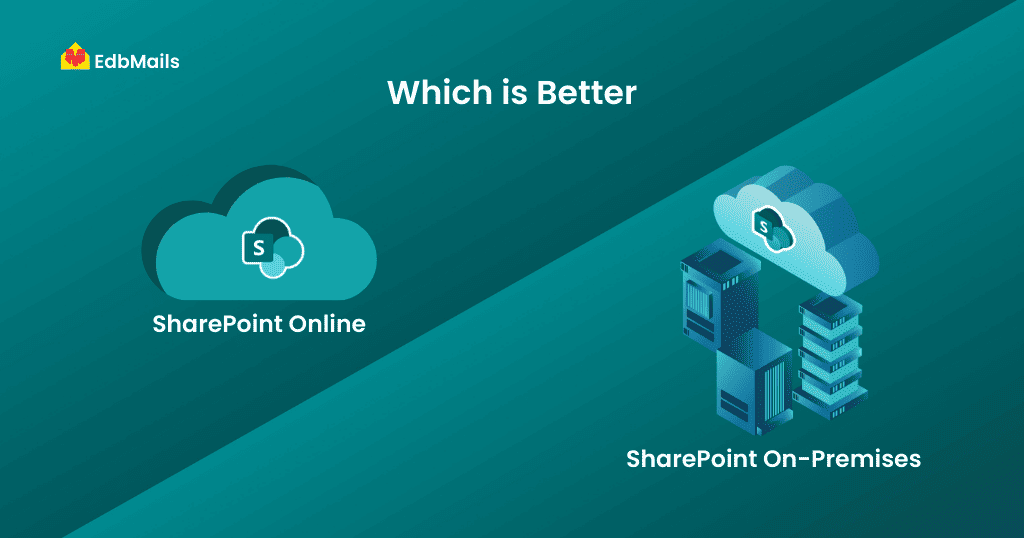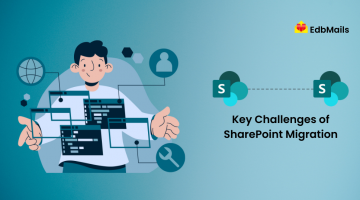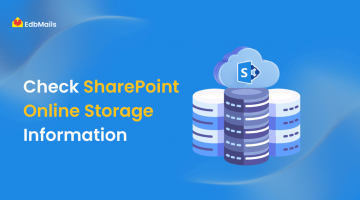What is SharePoint?
SharePoint is a web-based collaboration platform that enables teams to store, share, and organize information in one place. It acts like a secure digital workspace where employees can manage documents, track projects, and work together efficiently. With SharePoint, organizations can improve teamwork, streamline processes, and access information anytime, from the office or remotely.

What is SharePoint Online?
SharePoint Online is the cloud-based version of SharePoint. It eliminates the need to manage physical servers and comes with automatic updates, built-in security, and easy accessibility from anywhere. Businesses using SharePoint Online benefit from reduced IT overhead and the flexibility to scale as their needs grow.
What is SharePoint On-Premise?
SharePoint On-Premise is hosted on an organization’s own servers and managed internally by the IT team. This setup gives companies full control over customization, data storage, and security. It is often chosen by businesses with strict data governance requirements or compliance regulations that require data to remain within their infrastructure.
While it provides the same collaboration and document management features as SharePoint Online, it demands ongoing maintenance, upgrades, and server management by internal teams.
SharePoint Online vs On-Premise: A Practical Comparison
| Feature / Aspect | SharePoint Online | SharePoint On-Premise |
| Deployment | Cloud-based deployment with quick setup and no physical servers required. | Requires in-house servers, networking, and hardware setup. Deployment takes more time and effort. |
| Infrastructure Management | Managed by Microsoft with updates, scaling, and maintenance included. | Managed by the organization’s IT team, requiring skilled resources and higher costs. |
| Cost Model | Subscription-based, predictable monthly or yearly costs. | One-time licensing with ongoing server, hardware, and staffing expenses. Higher upfront costs. |
| Access | Accessible from anywhere with an internet connection. Ideal for remote work. | Usually restricted to the internal network unless VPN or external access is configured. |
| Updates & Upgrades | Automatic updates ensure access to the latest features and security. | Manual updates by IT staff. Delays may cause outdated features or vulnerabilities. |
| Scalability | Easily scalable by adjusting subscription plans and storage. | Scaling requires new servers and infrastructure investment. |
| Customization | Limited deep customization due to cloud restrictions, but supports modern apps and integrations. | Extensive customization possible with full control over systems and workflows. |
| Integration | Seamless integration with Microsoft 365 services like Teams and OneDrive. | Supports integrations but requires more configuration and hybrid setups for cloud services. |
| Data Storage | Data stored in Microsoft-managed global datacenters with redundancy. | Data stored internally, giving complete control over location and governance. |
| Security | Enterprise-grade security managed by Microsoft, including encryption and threat detection. | Security must be fully managed by the organization, requiring advanced expertise. |
| Compliance | Built-in compliance with global standards such as GDPR and HIPAA. | Compliance managed internally, often requiring more effort and resources. |
| Backup & Recovery | Automatic backup, redundancy, and disaster recovery included. | IT team responsible for backup, storage, and recovery planning. |
| Performance | High performance powered by global data centers and content delivery networks. | Performance depends on local network capacity and server infrastructure. |
| Support | Microsoft provides dedicated support as part of the subscription. | Support handled by in-house IT or external consultants. |
| Feature Availability | Always up to date with the newest features and innovations. | Feature set depends on installed version, requiring upgrades for new features. |
| Mobile Access | Optimized mobile access through apps and browsers. | Available, but performance depends on internal setup and customizations. |
| Internal Policies | Must align with Microsoft’s compliance framework, with limited customization. | Can be tailored to meet unique organizational policies and governance rules. |
| Disaster Recovery | Built-in disaster recovery with automatic failover. | IT team responsible for disaster recovery strategy and testing. |
Limitations of SharePoint Online vs On-Premise
When choosing between SharePoint Online and SharePoint On-Premise, it’s important to evaluate not just the benefits but also the limitations of each model. SharePoint Online delivers cloud-based convenience, reduced IT management, and faster deployment, but it may not suit every organization due to certain restrictions. On the other hand, SharePoint On-Premise provides full control, advanced customization, and compliance flexibility, but requires heavy infrastructure investments and ongoing maintenance.
Understanding these limitations helps businesses make the right decision for long-term scalability, compliance, and operational needs.
Limitations of SharePoint Online
1. Customization Restrictions
SharePoint Online does not support advanced server-side customizations or full-trust solutions. This limits the flexibility to adapt the platform to very specific organizational workflows.
2. Internet Dependency
Since SharePoint Online is cloud-based, uninterrupted internet access is required. Poor connectivity or outages can impact productivity and delay access to important data.
3. Storage Quotas and Additional Costs
Storage limits are tied to subscription plans. Exceeding quotas results in extra charges, making it challenging for organizations with large datasets or frequent file uploads to manage costs effectively.
4. Limited Control Over Updates
Microsoft manages all updates automatically. While this ensures new features and security fixes, businesses have little control over when updates occur. In some cases, changes may disrupt existing processes or customizations.
5. Data Location and Compliance
Data is stored in Microsoft’s global datacenters, which may raise concerns for businesses bound by strict data residency laws or industry-specific compliance requirements.
Limitations of SharePoint On-Premise
1. High Infrastructure Management Needs
Organizations must manage their own servers, networking, and hardware. This requires dedicated IT staff, regular maintenance, and higher costs compared to cloud solutions.
2. Scalability Challenges
Expanding capacity involves purchasing and configuring new servers. This process is both time-consuming and expensive, especially for fast-growing businesses.
3. Customization Complexity
While On-Premise allows deep customization, implementing and maintaining these solutions often requires advanced technical expertise. Customizations may also complicate upgrades and cause downtime.
4. Limited Remote Accessibility
By default, SharePoint On-Premise is only accessible within the company’s internal network. Enabling secure remote access requires extra setups like VPNs or external gateways.
5. Manual Updates and Patches
Unlike SharePoint Online, updates and patches for On-Premise must be manually applied by the IT team. This increases the risk of outdated features, delayed upgrades, and potential security vulnerabilities.
SharePoint Online Migration Made Easy with EdbMails
EdbMails SharePoint Online migration tool is designed to help organizations move data between SharePoint, OneDrive, and Microsoft Teams with ease. Whether you are migrating SharePoint sites, team sites, communication sites, libraries, lists, folders, files, or OneNote notebooks, EdbMails ensures a smooth and reliable migration.
This cost-effective solution helps businesses simplify complex migrations while maintaining data integrity and security.
Key Features of EdbMails SharePoint Migration
- Incremental Migration
Prevents duplicate items by ensuring only new or updated data is migrated during subsequent operations.
- No Size Limitations
Migrate large amounts of SharePoint data without restrictions on file or site size.
- Data Safety and Integrity
Ensures 100% secure transfer with no data loss between the source and destination.
- Folder Hierarchy Preservation
Maintains the original folder structure in the target environment for seamless navigation.
- Detailed Migration Reports
Provides a comprehensive log file after every migration for tracking and auditing purposes.
- Backup and Restore Options
In addition to migration, EdbMails enables you to back up your SharePoint data securely and restore it whenever required.
Why Choose EdbMails for SharePoint Migration?
EdbMails offers a reliable and easy-to-use platform for SharePoint Online migration that reduces downtime, ensures compliance, and supports long-term data management. With its user-friendly interface and advanced features, it helps organizations make a smooth transition to their preferred environment.
Conclusion
SharePoint Online and On-Premise both offer strong collaboration features but differ in flexibility, scalability, and management needs. Online is easier to deploy and maintain, while On-Premise gives full control with higher infrastructure demands. The right choice depends on your organization’s requirements, compliance, and growth plans. To simplify migration and avoid risks, EdbMails SharePoint migration tool ensures secure, seamless, and cost-effective data transfer with features like incremental migration, unlimited data handling, data integrity, and backup options—making it a reliable solution for smooth SharePoint transitions.
Read More:



